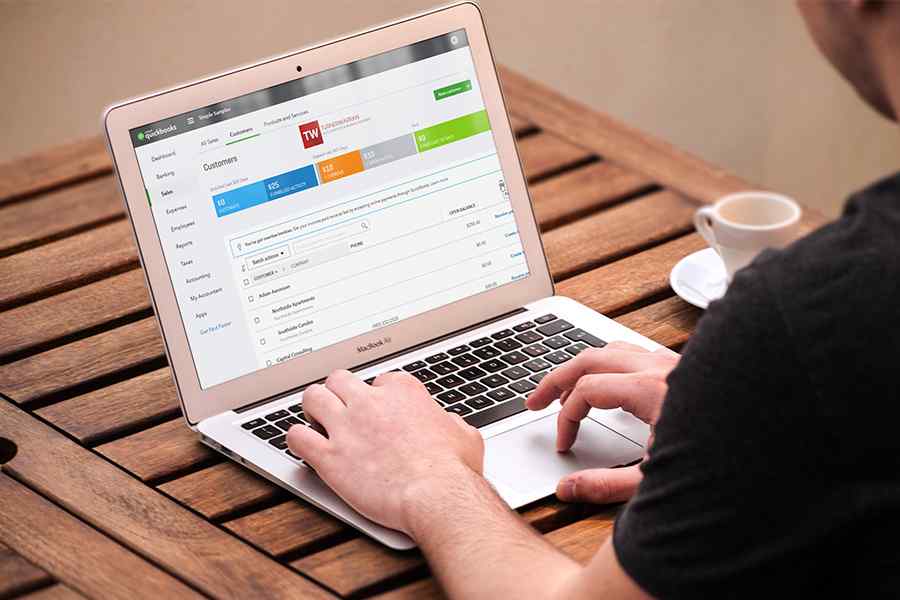
Although 401(k) accounts are primarily used for retirement savings, using a 401(k) to start a business or cover company expenses is possible. There are several ways this can be accomplished, including the use of a rollover for business startups (ROBS), a 401(k) loan, or conducting a regular withdrawal.
The best option will depend on your circumstances as each has nuances that can affect your total costs, the speed at which you receive access to funds as well as your eligibility. The option you select may also have tax implications, so you may want to consider speaking with an accountant to make sure you won’t have an unexpected bill when you file your taxes.
Method 1: ROBS
How a ROBS works
A ROBS is one way of starting a business with 401(k) money as it allows you to access your retirement accounts without penalty or tax implications. To accomplish this, business owners must adhere to a number of tax rules and regulations.
A ROBS works by first transferring the funds in your personal retirement account to your company’s retirement plan. That plan is then designated as an entity that will purchase stock in the business, providing you with access to the money. It’s similar to an individual purchasing stock in a publicly owned company as that action is what provides additional funds that the company can use.
Due to the complexity of this type of transaction and the consequences of improperly conducting a ROBS, it’s highly recommended that you use a ROBS provider like Guidant Financial. Guidant Financial is an expert in ROBS transactions and provides one of the industry’s best audit protection and legal support services in the event any issue arises.
Pros & Cons
Who should consider a ROBS
A ROBS won’t be the right option for everyone, but you may want to consider it if you fall into the following categories. You can also consider speaking with a ROBS provider to gain additional insight as many of these companies offer free consultations. They can educate you about the process and help you determine if this type of rollover might be a good fit for your circumstances:
- Your business is, or will be, structured as a C-corporation (C-corp): One of the core requirements of a ROBS is that your business must be a C-corp. This is to allow the company to have shareholders and the subsequent purchase of stock that will allow you access to the funds.
- You have a large retirement account balance: With most ROBS providers, you’ll need a minimum balance of $50,000 to be eligible. This is largely done to ensure you are not charged excessive fees in relation to the amount being rolled over.
- You don’t want to have monthly loan payments: Since a ROBS is not a loan, you won’t have to make monthly payments. This can help from a cash flow perspective, and also save you on interest charges.
- You are comfortable risking the balance of your retirement account: If your business fails, you also risk losing the retirement funds used in the rollover.
- You’re unable to qualify for a business loan: Most business loans have requirements for things like credit score, time in business, and revenue. A ROBS has no such criteria, which is why we also identified it as one of the best ways to fund a startup.
Summary of typical rates, terms & qualifications
How to get a ROBS
A ROBS is a complex transaction, so we first recommend working with a ROBS provider. In addition to Guidant Financial, you can also consider our other recommendations for the best ROBS companies.
Regardless of whether you decide to do a ROBS yourself or work with a ROBS provider, the transaction can be broken down into the following six steps. If you’re looking for additional details for each stage, you can reference our ROBS guide.
- Step 1: Establish a C-corp
- Step 2: Create a retirement plan within the C-corp
- Step 3: Choose a custodian for the retirement plan (check out our picks for the best 401(k) companies)
- Step 4: Rollover funds from personal retirement accounts to the C-corp’s retirement plan
- Step 5: Have the C-corp’s retirement plan purchase stock in the company
- Step 6: Utilize available funds for business purposes
Method 2: 401(k) Loan
How a 401(k) loan works
A 401(k) loan allows you to borrow against the balance in your 401(k) retirement account. IRS rules typically limit the amount you can borrow to either 50% of your vested balance or $50,000, whichever is less. Repayments must also generally be made on a quarterly basis and be paid in full within five years.
Although 401(k) loans do carry an interest rate, that interest is repaid to your retirement account. Additionally, since 401(k) loans are typically tied to an employer, you’ll be required to repay the loan on an accelerated timeline if you separate from the company. If that happens, you’ll have until the due date of your next federal tax return to pay off the loan.
Pros & cons
Who should consider a 401(k) loan
- You have a sufficiently large balance in your 401(k): Since 401(k) loans are limited to the lesser of 50% of your vested balance or $50,000, you’ll want to make sure that it will be enough to satisfy your funding needs.
- You don’t anticipate separating from your employer in the short term: Since you’d have to repay the loan on an accelerated timeline if you separated from your employer, we recommend this as an option only if you don’t foresee any short-term changes in employment.
- You can repay the loan quickly, if needed: Since you’d have a shorter period of time to pay off the loan if you separated from your employer, it’s a good idea to also have other means to complete a full payoff just as a backup plan.
- You don’t qualify for a business loan: A 401(k) loan rarely has requirements for things like credit scores or income, which makes it a good option to consider if you’re not able to get a business loan.
Summary of typical rates, terms & qualifications
How to get a 401(k) loan
401(k) loans are generally handled by your plan’s administrator, so the steps may vary slightly. In general, however, you’ll need to go through the following stages:
- Step 1: Contact your plan’s administrator with your loan request
- Step 2: Review terms and complete required paperwork with the details of your funding request
- Step 3: Verify receipt of funds
- Step 4: Verify regular payments through payroll deductions or other method as allowed by your plan administrator
Method 3: 401(k) Withdrawal
How a 401(k) withdrawal works
A 401(k) withdrawal gives you access to the vested portion of your 401(k) account balance. However, this can come with hefty penalties, fees, and taxes.
401(k) accounts are designed for retirement, so the IRS assesses an additional income tax of 10% on withdrawals made prior to the age of 59.5. Since the funds you withdraw may also be taxed as regular income, your plan administrator could also be required to withhold 20% for federal taxes.
To illustrate the impact that penalties and taxes could have on an early withdrawal, Fidelity provides an example on its website of how an individual would need to take out nearly $24,000 to net $15,000 in funds. Although the precise amounts can vary depending on your unique circumstances, the key takeaway is that the amount of taxes and penalties can quickly lower the amount of the final check you receive.
Pros & cons
Who should consider a 401(k) withdrawal
Unless you’ve reached retirement age, a 401(k) withdrawal should be considered as a last resort. This is because of the heavy amount of taxes and penalties involved with cashing out the account early. With that being said, it might be a good option if any of the following apply to you:
- You have an urgent need for funds and cannot get financing elsewhere: If you need funds quickly to cover an emergency but cannot get approved for a loan, a 401(k) withdrawal can be an option as it does not have any credit or income requirements.
- You have reached retirement age: If you’ve already reached the age of retirement, you can avoid the penalties associated with an early withdrawal. However, be aware that the funds you get may still be taxed as ordinary income.
- You qualify for an exception to be exempt from penalties: The IRS provides a list of circumstances that will exempt you from paying an early withdrawal penalty. However, there are no exemptions listed for utilizing funds for starting up a business, covering regular business expenses, or acquiring another company.
Summary of typical rates, terms & qualifications
How to complete a 401(k) withdrawal
As with a 401(k) loan, the exact steps involved with making a withdrawal can vary depending on your employer and/or the retirement plan’s administrator. The steps below, however, are fairly common stages you’ll need to follow:
- Step 1: Contact your employer or the plan’s administrator with your request
- Step 2: Review any disclosures you’re provided and complete your plan’s paperwork for a withdrawal request
- Step 3: Verify receipt of funds
Alternatives to 401(k) Business Funding
If you’re not able to use a 401(k), or the funds would not be sufficient to meet your needs, below is a list of some additional sources of funding to consider. If you decide to pursue a loan, we recommend reading our guide on how to get a small business loan as it contains tips on improving your approval odds and getting funded more quickly:
- Personal loan: In some cases, you can get up to $100,000 or more in funding on a personal loan. Qualification requirements typically focus more on your personal credit and finances, rather than those of your business. Check out our picks of the best personal loans for business funding.
- Home equity loan or home equity line of credit (HELOC): These are good options to consider if you have good personal credit, finances, and sufficient equity in your home. Funds can be used for nearly any business purpose, and you can check out our separate home equity loan and HELOC guides to learn more about how to get this type of financing.
- Friends and family: A big benefit of asking friends and family for funding is that you can bypass many of the typical requirements associated with getting a loan from a bank. With that being said, it can run the risk of straining relationships if the business venture does not succeed. Learn more about the different ways you can get this type of funding in our guide.
Frequently Asked Questions (FAQs)
You can choose from one of three main options. If you have at least $50,000 in your retirement accounts, you can do a rollover for business startups (ROBS). Your second option is to get a 401(k) loan. Finally, you can choose to cash out the balance of your 401(k), an option that often carries hefty penalties and tax implications.
IRS regulations generally allow you to get up to 50% of your vested balance or $50,000, whichever is less. If you need more money, you’ll need to cash out your 401(k) or consider alternative methods of financing.
Yes, you can cash out your 401(k) and use the funds for business expenses. However, this often carries significant penalties and fees. In addition to having to pay income tax, individuals who have not yet reached retirement age may be subject to an additional 10% early withdrawal penalty.
Bottom Line
Although it’s possible to use funds in your 401(k) to fund your business, you should carefully consider the risks in doing so. Since you could be risking the balance of your retirement savings, it’s wise to also think about other financing options.
If you’re considering 401(k) business financing, we recommend speaking with a company like Guidant Financial. Guidant is a specialist in 401(k) business financing and also offers different types of funding options such as SBA loans, franchise financing, unsecured loans, equipment leasing, and more. You can set up a free consultation session to discuss your needs and see if it can offer a suitable form of funding for you.



![what-are-current-liabilities?-how-to-calculate-them-[+-calculator]](https://zabollah.com/wp-content/uploads/2024/06/19458-what-are-current-liabilities-how-to-calculate-them-calculator.jpg)

